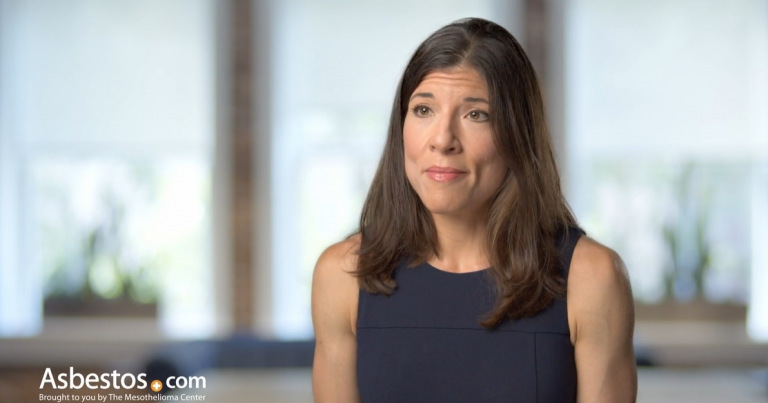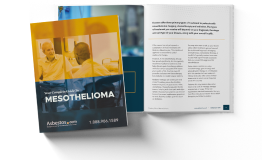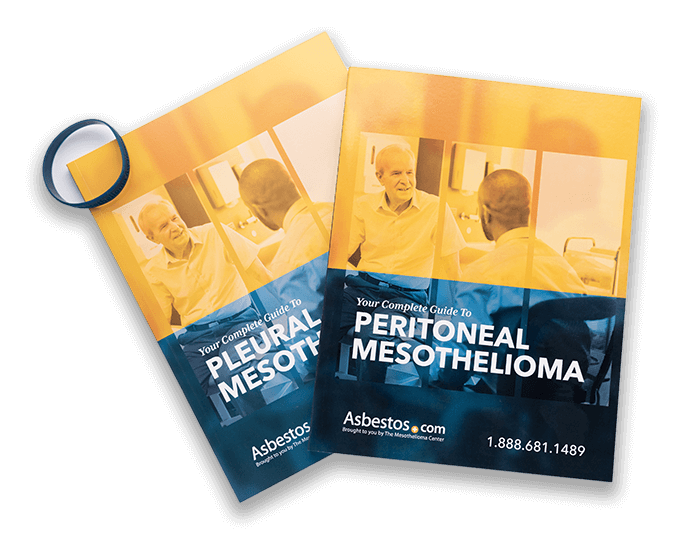Asbestos Legislation and Bans in the US
Most U.S. laws for a full asbestos ban have failed. A limited number of asbestos uses are banned under various acts, but some remain legal. The Biden administration did successfully finalize a rule in March 2024 that bans chrysotile asbestos.
How Does Asbestos Legislation Control Its Use?
Both federal and state laws regulate the use of asbestos in the U.S. Federal and state laws work together to regulate asbestos. They cover its use and abatement. Federal laws apply nationwide and mostly affect how asbestos is used in products.
Most industrialized countries have banned asbestos. America has partial bans in place. But it hasn’t fully banned the toxic mineral yet. There is no comprehensive federal law on asbestos at this time.
- State asbestos laws are similar on abatement, but vary on asbestos litigation.
- Some states passed laws limiting compensation for sickness, death and lost wages.
- Congress passed federal laws to create compensation systems for other types of claimants.
The Occupational Safety and Health Administration defines asbestos-containing materials as any material that contains more than 1% asbestos. Manufacturers can label any product asbestos-free if it contains less than 1% asbestos.
Was an Asbestos Ban Signed Into Law?
In March 2024, the Biden administration banned chrysotile asbestos. This ban doesn’t apply to all types of asbestos. The final rule has different timelines for phasing out uses of this specific type of asbestos over time.
For example, most asbestos sheet gaskets will be phased out in 2-5 years. The ban on aftermarket automotive brakes and linings, asbestos oilfield brake blocks and other vehicle friction products went into effect 6 months after the rule’s effective date.
- Artificial fireplace embers
- Automotive products
- Block insulation
- Commercial paper
- Corrugated paper
- Fabrics and textiles
- Flooring felt
- Insulation materials
- Oilfield brake blocks
- Pharmaceutical filters
- Pipe insulation
- Roofing and siding
- Rollboard
- Specialty paper
- Spray-applied surfacing materials
- Wall patching compounds
The 2024 ban is the latest in a long history of partial bans in the U.S. Attempts at a full ban have been unsuccessful. Under a patchwork of laws and regulations such as the Clean Air Act of 1970, the 1972 Consumer Product Safety Act and the Medical Device Amendments of 1976, some uses have been banned.
The Asbestos Hazard Emergency Response Act of 1986 regulates asbestos in schools. It orders the U.S. Environmental Protection Agency to monitor asbestos levels in schools. And it established regulatory standards for inspections and abatement. All schools, both public and private, must conduct asbestos inspections. They must also develop plans for containment or removal.
Asbestos Uses That Are Still Allowed
There are still a number of uses of asbestos that are still allowed in the U.S. For example, the 2024 ban gives the chlor-alkali industry 5-12 years to find asbestos alternatives and convert all of their facilities. The industry currently makes diaphragms using the mineral. These diaphragms are used to make chlorine for water purification.
To make these diaphragms, the industry imports raw asbestos into the U.S. In 2022, there were 224 metric tons of raw asbestos imported into the country. In 2020, the total amount imported was 305 metric tons, according to the U.S. Geological Survey.
- Asbestos cement sheets
- Brake Linings
- Brake Pads
- Diaphragms used in the chlor-alkali industry
- Flooring Products
- Gaskets
- Roofing
- Seals
- Some building materials
Asbestos sheet gaskets will be allowed for another 2 years under the ban. A key exception is an extended deadline for the Savannah River Site. To allow for the safe disposal of nuclear materials, the site has until until 2037 to phase out asbestos.
Manufacturers producing talc products may also put consumers at risk of asbestos exposure. Talc, also a mineral, can become contaminated with asbestos. The U.S. Food and Drug Administration has tested a variety of products for contamination. The agency found asbestos in baby powder, kids’ makeup kits, toys and personal hygiene products. While some companies have phased out the use of talc, many brands of makeup, for example, still use talc as a primary ingredient.
5.0 rating | 150+ reviews | A+ BBB

Timeline of Asbestos Regulations
Asbestos regulations in the U.S. began in the 1970s. For decades, asbestos was used heavily in construction and industrial products. Despite research into asbestos-related diseases as early as the 1920s and 1930s, many industries profited from asbestos and fought bans.
As the U.S. government passed laws to regulate it in the 1970s and 1980s, asbestos use decreased. Manufacturers began to seek safer, alternative materials. As awareness of the dangers of asbestos grew, consumer demand for asbestos-free products also drove companies to phase out its use.
-
2010-PresentIn March 2024, the Biden administration banned chrysotile asbestos in the U.S. On April 25, 2019, the EPA issued a final rule on the Restrictions on Discontinued Uses of Asbestos. A Significant New Use Rule requires notice to the agency before using chemical substances in new ways that may raise concerns.
-
2000-2010The EPA revised the Asbestos Worker Protection Rule in 2000. The final rule became effective on December 15, 2000. The revision amended the WPR to protect state and local workers from asbestos, like private sector workers. The rule adopted OSHA’s Asbestos Standards for these employees.
-
1990-2000The U.S. Congress amended the Bankruptcy Reform Act of 1994. It lets firms with big asbestos liabilities seek bankruptcy for future claims. These amendments were sometimes called the “Manville Amendments.” The provisions let manufacturers, like Johns Manville, file for bankruptcy.
-
1980-1990Asbestos Hazard Emergency Response Act of 1986 is a federal law. It requires the EPA to set standards for inspecting and removing asbestos in schools.
-
1970-1980The Consumer Product Safety Act of 1972 banned asbestos in artificial fireplace embers and wall patching compounds. The Toxic Substances Control Act of 1976 says the EPA can restrict substances including asbestos. The Medical Device Amendments of 1976 lets the FDA ban asbestos filters in drug manufacturing.
-
1960-1970The 1970 Clean Air Act classified asbestos as a hazardous pollutant. It gave the EPA the power to regulate its use and disposal.
-
1930-1960Medical evidence linked asbestos to deadly diseases. Asbestos manufacturers knew the risks. But, many didn’t warn workers or the public. Asbestos-related health hazards weren’t widely known until the 1960s and 1970s.
Asbestos regulations have evolved over the past century. They now focus on protecting public health as the risks of exposure become better known. The use, import and handling of the hazardous mineral is now strictly regulated. Regulations have helped reduce exposure.
Challenges to Asbestos Regulations
The asbestos, construction and manufacturing industries have lobbied against stricter regulations. They’ve argued some uses, like fireproofing, require asbestos. Opponents of a total asbestos ban argue it would be too costly. They suggest costs would be especially high when it comes to removing legacy asbestos in older buildings.
These challenges have made passing tighter and broader regulations difficult. As a result, some asbestos uses continue. And asbestos remains in many buildings, posing health risks. The debate also continues over the definition of “safe” levels of asbestos. Some industry proponents, despite strong evidence linking asbestos to cancers, have argued that some types of asbestos are less harmful.
People harmed as a result of asbestos exposure should hire specialized mesothelioma lawyers. They have the best chance of helping you get compensation.
If you have known asbestos exposure, discuss it with your doctor. For both future medical and legal reasons, it can be useful to have the exposure registered in your medical records.
Past Attempts to Ban Asbestos
There have been many attempts to ban asbestos over the years. Many advocates for a ban were hopeful when the EPA announced the Asbestos Ban and Phase-Out Rule in July 1989. It would have banned making, importing, processing and selling asbestos products. The asbestos industry launched a fierce counterattack and sued the EPA.
In October 1991, the Fifth Circuit Court of Appeals overturned a ban on asbestos products. The court said the EPA failed to show a ban was the “least burdensome alternative” to regulating asbestos. The George H.W. Bush Administration discouraged the agency from appealing the ruling.
- Asbestos Ban and Phase-Out Rule:The court overturned the rule. But, it did allow a ban on 6 types of asbestos-containing products. Manufacturers cannot produce, process or import them.
- Ban Asbestos in America Act:The act aimed to ban asbestos in the U.S. In 2007, the Senate passed the bill, but it died in the House.
- Bruce Vento Ban Asbestos and Prevent Mesothelioma Act:This 2008 act aimed to ban more asbestos products. But, it would have allowed asbestos in making chlorine and lye. It would have revised the definition of asbestos to include winchite, richterite and other asbestiform amphibole minerals. These types of asbestos have sickened people in Libby, Montana.
- Alan Reinstein Ban Asbestos Now Act:First introduced in 2019, it aimed to ban asbestos and addressed legacy asbestos. In October 2020, the bill stalled in Congress and never passed. Republican support had waned over a change to the bill on asbestos-contaminated talc litigation.
Since the lawmakers overturned the ABPR, they have made several other attempts to fully ban asbestos. In the past, lobbyists for the chemical and construction industries worked to block these bans.
Some states have taken strong action to protect the public from asbestos. In June 2024, Michigan Governor Gretchen Whitmer signed bipartisan bills to protect people from asbestos exposure. The bills address abatement projects and requiring public contracts to disclose certain information to the public. It also recommends an annual report on the asbestos emissions program for demolition or renovation.

Get help paying for mesothelioma treatment by accessing trust funds, grants and other options.
Get Help NowOutlook for New Asbestos Laws
Activists are still fighting to pass The Alan Reinstein Ban Asbestos Now Act. If approved, the law would ban all uses of commercial asbestos and asbestos-containing products. The bill was first introduced in 2019. In March 2023, the legislature read the bill twice. Then, it referred it to the Committee on Environment and Public Works.
The bill’s name honors the husband of Linda Reinstein, a co-founder of the Asbestos Disease Awareness Organization. In 2003, doctors diagnosed Linda’s husband Alan with pleural mesothelioma. At the time, neither he nor his wife had ever heard of the disease. Alan died 3 years after his diagnosis in 2006.
A nationwide asbestos ban could greatly improve public health. A full ban could cut the risk of cancers such as mesothelioma. It may also lower healthcare costs. A total ban could create an improved long-term health outlook for future generations.
Notable Worldwide Asbestos Rules
In 1983, Iceland was the first country to ban all types of asbestos. In the 1980s and 1990s, other countries followed suit. They included Sweden, Denmark, Norway, Austria and Finland. These initial bans paved the way for global efforts to ban asbestos.
- 2024: The European Union enacted a new directive protecting workers from asbestos, setting stricter exposure limits and improved worker training.
- 2021: A total of 17 states in Brazil banned asbestos.
- 2018: Canada passes its Prohibition of Asbestos and Products Containing Asbestos Regulations.
- 2010: Turkey bans all uses of asbestos with new regulations.
- 2006: The UK introduces the Control of Asbestos Regulations Act combining two laws to ban all forms of asbestos.
- 2005: The EU finalizes a ban, outlawing the import, export or manufacture of asbestos in all member countries.
- 2003: Australia bans the use of chrysotile (white) asbestos, nearly 20 years after banning amosite (brown) asbestos.
Since 2005, the WHO has fought for a global ban on asbestos to help combat the rise in mesothelioma and other asbestos-related diseases. In 2013, the WHO launched a plan to end asbestos use in its 190 member states by 2020. Unfortunately, it was never adopted.
Common Questions About Asbestos Bans and Regulations
- Has mesothelioma legislation been passed?
-
No specific federal legislation has been passed regarding mesothelioma.
Answered By: Carl Money, Mesothelioma Attorney, Nemeroff Law Firm
- Who can pass an asbestos law or regulations?
-
Congress can pass federal asbestos laws before the president signs them. States can also regulate asbestos use. Several agencies may also regulate asbestos. These include the Environmental Protection Agency, Occupational Safety and Health Administration, Mine Safety and Health Administration and the Consumer Product Safety Commission.
- What is OSHA’s policy for asbestos?
-
Specific standards cover asbestos hazards for general industry, maritime and construction.
-
Excursion Limit: The EL for asbestos is 1.0 fibers per cubic centimeter over a 30-minute period.
-
Exposure monitoring: Employers must track asbestos exposure. They must test workers exposed at or above the permissible exposure limit for 30 or more days per year.
-
Medical evaluation: Employers must test the health of workers who wear negative-pressure respirators.
-
Notification: If lab results show that the airborne fiber limit is exceeded, employers must notify employees of the actions being taken to correct the problem.
-
Permissible Exposure Limit: The PEL for asbestos in the workplace is 0.1 fibers per cubic centimeter of air over an eight-hour period.
-
Personal protective equipment: Employers must train all workers exposed to asbestos in the use of PPE.
-
Workplace assessment: Employers must check their workplace for asbestos. They must also assess if work will create airborne fibers.
-
Written opinion: Employers must get a written opinion from a doctor. It must assess the employee’s health and fitness to wear PPE.
-
- Do some products still contain asbestos today?
-
Yes, some products still contain asbestos. It’s illegal to sell new products with the toxic mineral. But you can still find legacy asbestos in some automotive parts, construction materials, fireproofing and insulation. Asbestos diaphragms are still used in the chlor-alkali industry.
- What is the asbestos reporting rule?
-
The asbestos reporting rule is a one-time requirement. It applies to companies that made, imported or processed asbestos from 2019 to 2022. The EPA finalized the rule under the Toxic Substances Control Act.
The TSCA requires companies to report asbestos types, amounts, uses and its presence. They must also provide employee data and the number of workers involved. The rule applies to companies with annual sales of more than $500,000 between 2019 and 2022. The EPA will use the reported information to consider future actions, such as risk evaluations and management.
This Page Contains 20 Cited Articles
The sources on all content featured in The Mesothelioma Center at Asbestos.com include medical and scientific studies, peer-reviewed studies and other research documents from reputable organizations.
- Michigan.gov. (2024, June 20). Gov. Whitmer Signs Bipartisan Bills Protecting Michigander's Health from Harmful Asbestos Exposure, Among Other Legislation. Retrieved from https://www.michigan.gov/whitmer/news/press-releases/2024/06/20/gov-whitmer-signs-bipartisan-bills-protecting-michiganders-health-from-harmful
- Davenport, C. (2024, March 18). U.S. Bans the Last Type of Asbestos Still in Use. Retrieved from https://www.nytimes.com/2024/03/18/climate/biden-administration-bans-asbestos.html
- Brennan, S. (2024, January 24). EU's New Directive Boosts Workplace Protection from Asbestos. Retrieved from https://www.useforesight.io/news/eu-introduces-new-directive-to-enhance-protection-against-asbestos-exposure-in-the-workplace
- U.S. Geological Survey. (2024, January). Mineral Commodity Summaries: Asbestos. Retrieved from https://pubs.usgs.gov/periodicals/mcs2024/mcs2024-asbestos.pdf
- U.S. EPA. (2021, December 16). Actions under TSCA Section 5: Significant New Use Rules (SNURs). Retrieved from https://www.epa.gov/reviewing-new-chemicals-under-toxic-substances-control-act-tsca/actions-under-tsca-section-5#SNURs
- U.S. EPA. (2021, September 10). Asbestos. Retrieved from https://www.epa.gov/asbestos
- Mealey's. (2021, April 28). A 2021 Look At Bankruptcy Trust And Transparency Issues In Asbestos Litigation. Retrieved from https://www.hpylaw.com/content/uploads/2021/05/A-2021-Look-At-Bankruptcy-Trust-And-Transparency-Issues-in-Asbestos-Litigation.pdf
- Reinstein, L. & White, H. (2020, July 21). Guest view: Asbestos fight in Congress is at critical stage. Retrieved from https://mtstandard.com/opinion/columnists/guest-view-asbestos-fight-in-congress-is-at-critical-stage/article_04962e88-5914-5e0f-a2ee-8052808aca3a.html
- Kazan-Allen, L. (2019, July 15). Current Asbestos Bans. Retrieved from http://ibasecretariat.org/alpha_ban_list.php
- U.S. EPA. (2019, April 25). Restrictions on Discontinued Uses of Asbestos; Significant New Use Rule. Retrieved from https://www.regulations.gov/document/EPA-HQ-OPPT-2018-0159-5897
- Friedman, L. (2018, August 10). E.P.A. Staff Objected to Agency’s New Rules on Asbestos Use, Internal Emails Show. Retrieved from https://www.nytimes.com/2018/08/10/climate/epa-asbestos-rule.html
- Dixon, L., McGovern, G. & Coombe, A. (2010). Asbestos Bankruptcy Trusts. Retrieved from https://www.rand.org/content/dam/rand/pubs/technical_reports/2010/RAND_TR872.pdf
- United States Senator Patty Murray. (2007, June 12) Murray Testifies about the Need to Ban Asbestos in the U.S. Retrieved from https://www.murray.senate.gov/murray-testifies-about-the-need-to-ban-asbestos-in-the-u-s/
- Castleman, B.I. Asbestos: Medical and Legal Aspects. Aspen Publishers: New York, 2005.
- Cornell Law. (n.d.) Clean Air Act of 1970, 42 U.S.C. 7412 Hazardous air pollutants. Retrieved from https://www.law.cornell.edu/uscode/text/42/7412
- U.S. FDA. (n.d.). A History of Medical Device Regulation & Oversight in the United States. Retrieved from https://www.fda.gov/medical-devices/overview-device-regulation/history-medical-device-regulation-oversight-united-states
- U.S. Department of Labor. (n.d.). About Black Lung Program. Retrieved from https://www.dol.gov/owcp/dcmwc/
- GOVtrack. (n.d.). S. 717 (116th): Alan Reinstein Ban Asbestos Now Act of 2019. Retrieved from https://www.govtrack.us/congress/bills/116/s717
- GOVtrack. (n.d.). H.R. 906 (115th): Furthering Asbestos Claim Transparency (FACT) Act of 2017. Retrieved from https://www.govtrack.us/congress/bills/115/hr906
- GOVtrack. (n.d.). H.R. 6903 (110th): Bruce Vento Ban Asbestos and Prevent Mesothelioma Act of 2008. Retrieved from https://www.govtrack.us/congress/bills/110/hr6903
-
Current Version
-
January 2, 2025Written ByJoe Lahav, EsquireEdited ByWalter PachecoMedically Reviewed ByWilliam A. Davis









